
Although today the concept of
writing on flags goes against our
principles of flag etiquette, the
practice of writing on flags for
various reasons is an important
aspect of flag history.
Typically, writing can be
categorized into a few general
categories: political writing,
commemorative writing, and
advertising. In all cases, the
practice uses the image of the flag
to connect patriotic sentiment with
a cause or event. The examples
shown here demonstrate that whether
used for commercial purposes or
military, political or historical
purposes, the presence of writing
adds a fascinating dynamic to flags
and allows collectors to attribute
particular flags to times and events
with greater accuracy. In this
way, a great deal of the provenance
of the flag is a part of the flag
itself.
|
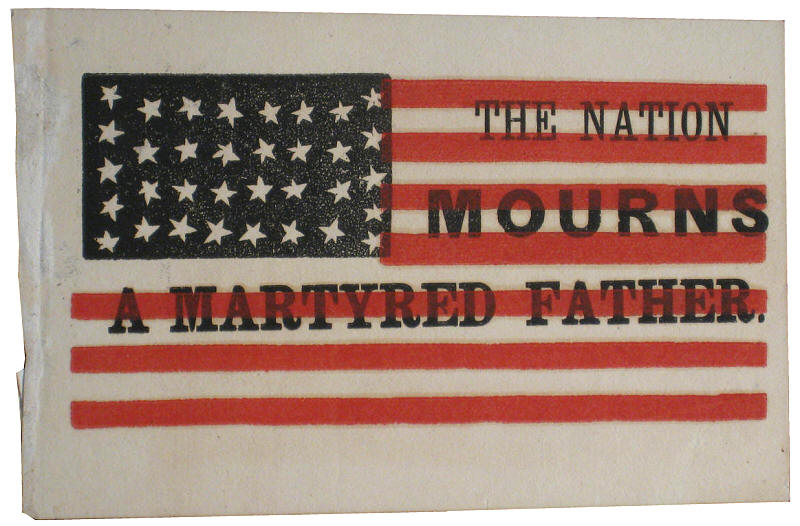 |
President Lincoln Mourning
Flag, 1865.
This is one of a series of
five or six styles of
paper-printed flags produced
immediately following
Abraham Lincoln's
assassination on April 15,
1865. The black canton
represents a nation in
mourning. The words
are concise, yet poignant,
calling the beloved
president "father".
The flags were affixed to
sticks and waved along the
president's funeral route.
The glue on the hoist of the
flag where it was affixed to
its stick is still visible. |
|
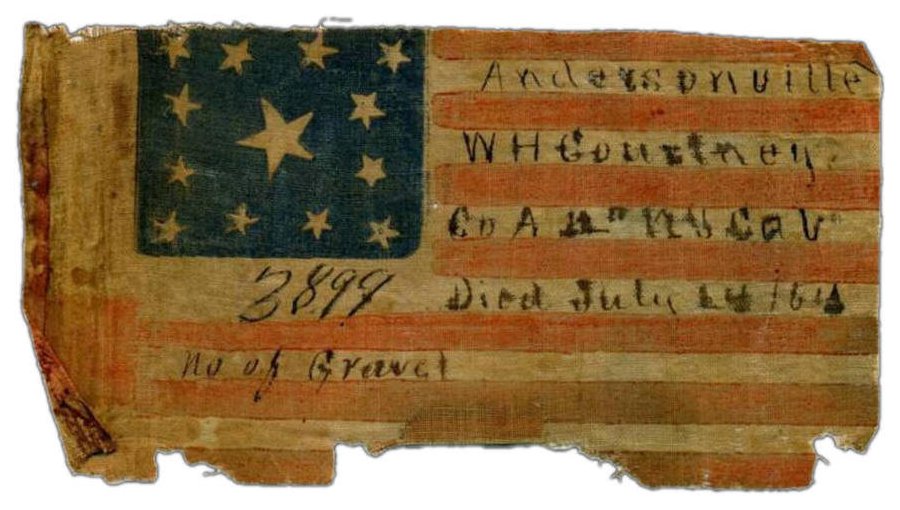 |
Andersonville Prison
Memorial of W. H. Courtney,
A Co., 12th New York
Volunteers, 1864.
One of the most personal and
poignant relics to have
survived the American Civil
War, this flag was present
in Andersonville Prison and
commemorates the death of
Private William Courtney on
July 14, 1864. A more
detailed description of the
flag can be found
here. |
|
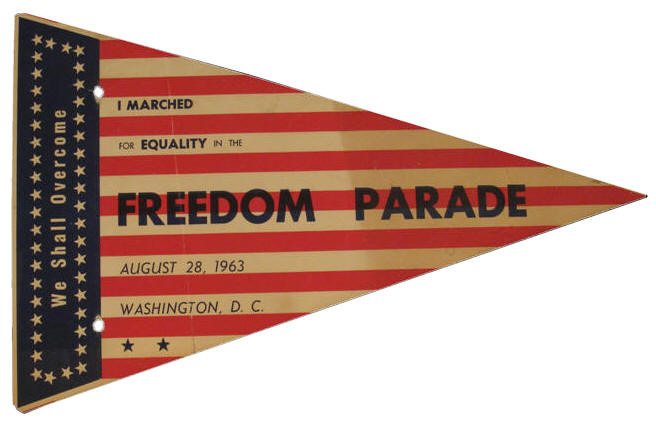 |
Dr. Martin Luther King,
"I Have A Dream",
August 28, 1963.
Without a doubt among the
rarest, if not the rarest,
of all flags in the
collection, this printed
parade flag in pennant form
was carried during the March
On Washington on August 28,
1963 and present in the
audience when Dr. Martin
Luther King delivered his
eternally famous "I Have A
Dream" speech. "We
Shall Overcome", the
rallying cry of the early
Civil Rights Movement, is
printed in the canton. The
presence of the date and
location of the event, and
the plain spoken words "I
MARCHED FOR EQUALITY" make
it perhaps the most
extraordinary American
flag-related artifact extant
from the Civil Rights
Movement. |
|
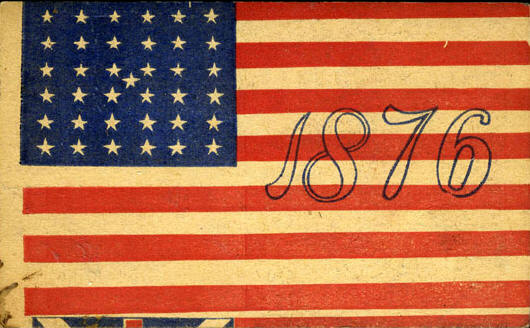 |
Centennial Advertising
Card, 1876.
This Centennial advertising
card from 1867 was printed
as an advertisement for
Gould's Hotel in
Philadelphia. The
bold, stylistic 1876
overprint and unusual 37
star configuration with a
single central star on an
otherwise standard 36 star
field is a beautiful
presentation. The
uneven cut of the card shows
the top of what appears to
be the Canadian Red Ensign,
a reminder of the
international scope of the
event.

|
|
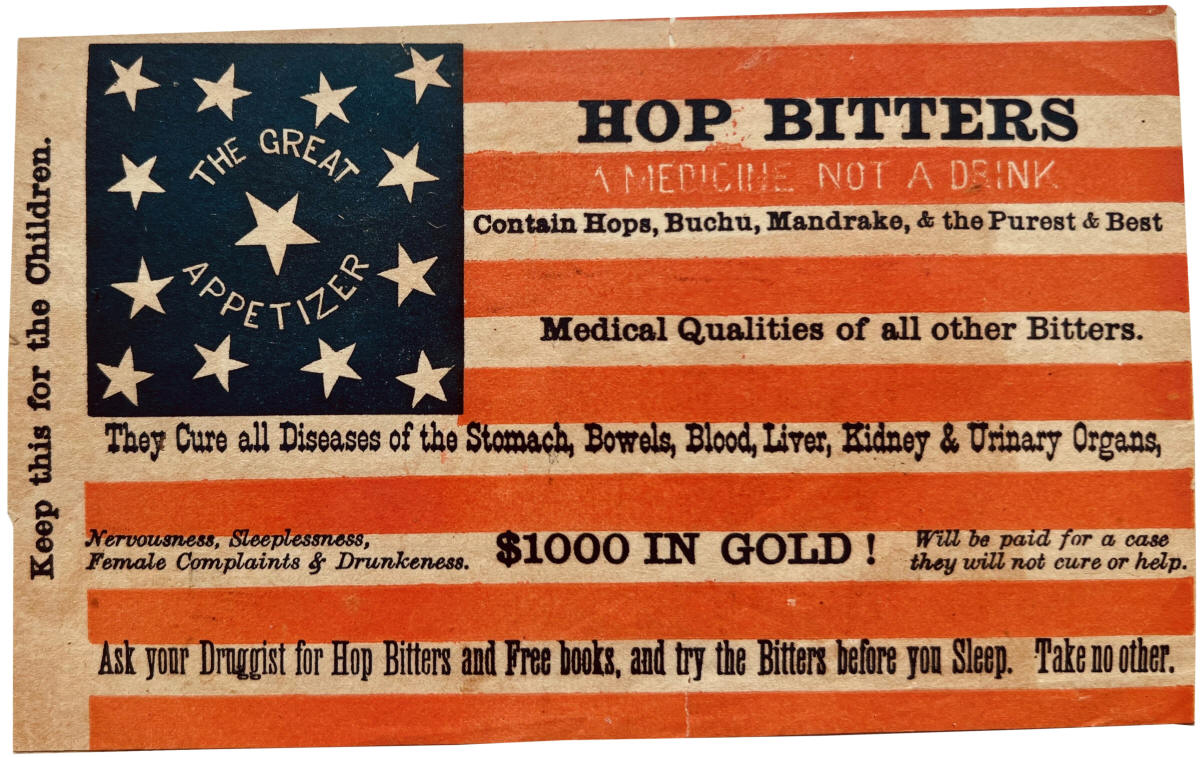 |
Hop Bitters Advertising
Card, c1880.
This fragile paper flag was
packed and distributed along
with Hop Bitters, a
purportedly medicinal
concoction of the 1880s.
The flag is a great folk
presentation, with
fascinating writing
including a $1000 in Gold
promise to those who aren't
cured, and an even bolder
claim that the bitters can
even treat "Nervousness,
Sleeplessness, Female
Complaints & Drunkenness",
right next to the
instructions to "Keep this
[flag] for the Children."
The presence of writing in
the canton is especially
rare. |
|
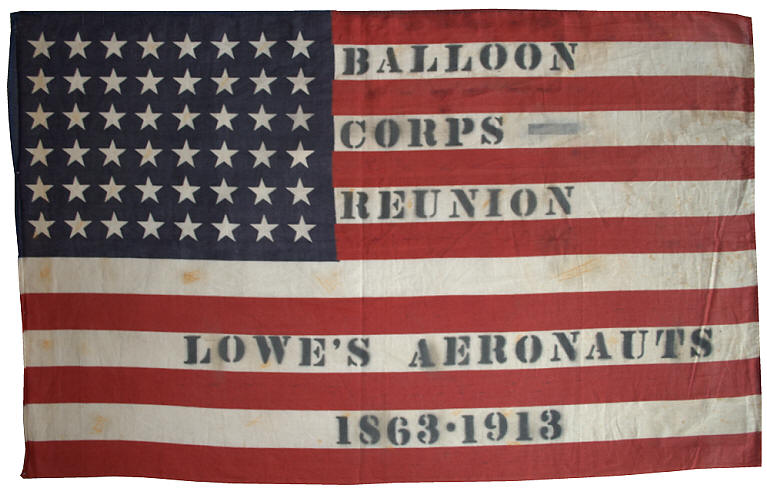 |
|
Lowe's Aeronauts Reunion,
1913. This
fantastic overprint flag
descended in the family of
James Allen, a renowned
early American aeronaut and
assistant to
Union Balloon Corps
founder
Thaddeus S. C. Lowe.
Although the unit was
technically a civilian unit,
it is regarded as the
earliest American military
aeronautical
unit and the
earliest American
employment of
overhead
surveillance for the
purpose of gathering
intelligence on
enemy troop
movements. The
48 stars of the flag became
official just one year
earlier in 1912. |
 
Left:
James Allen, 1863.
Right: Thaddeus Lowe
ascending during the
Battle of Seven
Pines in the balloon
The Intrepid, May 31
- June 1, 1862.
Note the "Stars and
Stripes" painted
balloon basket. |
|
|
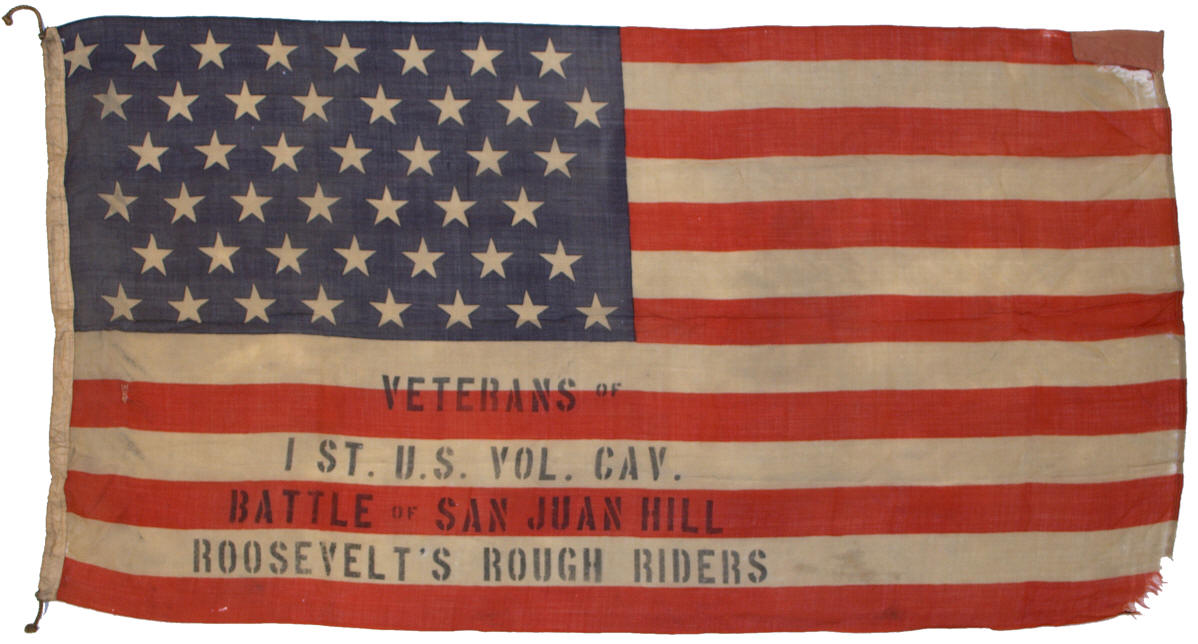 |
Roosevelt's Rough Riders Reunion,
Circa 1900. This
very rare flag of 45 stars
was made for one of the
reunions of Theodore
Roosevelt's famed Rough
Riders, officially designed
as the 1st U.S. Volunteer
Cavalry. Aside from
being associated with one of
the most famed units in
American military history,
the flag's writing mentions
the unit's most famous
battles, the Battle of San
Juan Hill, fought in Cuba on
July 1, 1898. The flag is
made of wool bunting with
clamp dyed stars. The
overprint is stenciled in
large stencil letters.
Like the Lowe's Aeronauts
flag pictured above,
stenciling was used to
overprint commercial flags
for military reunions in the
early part of the 20th
century. |
|
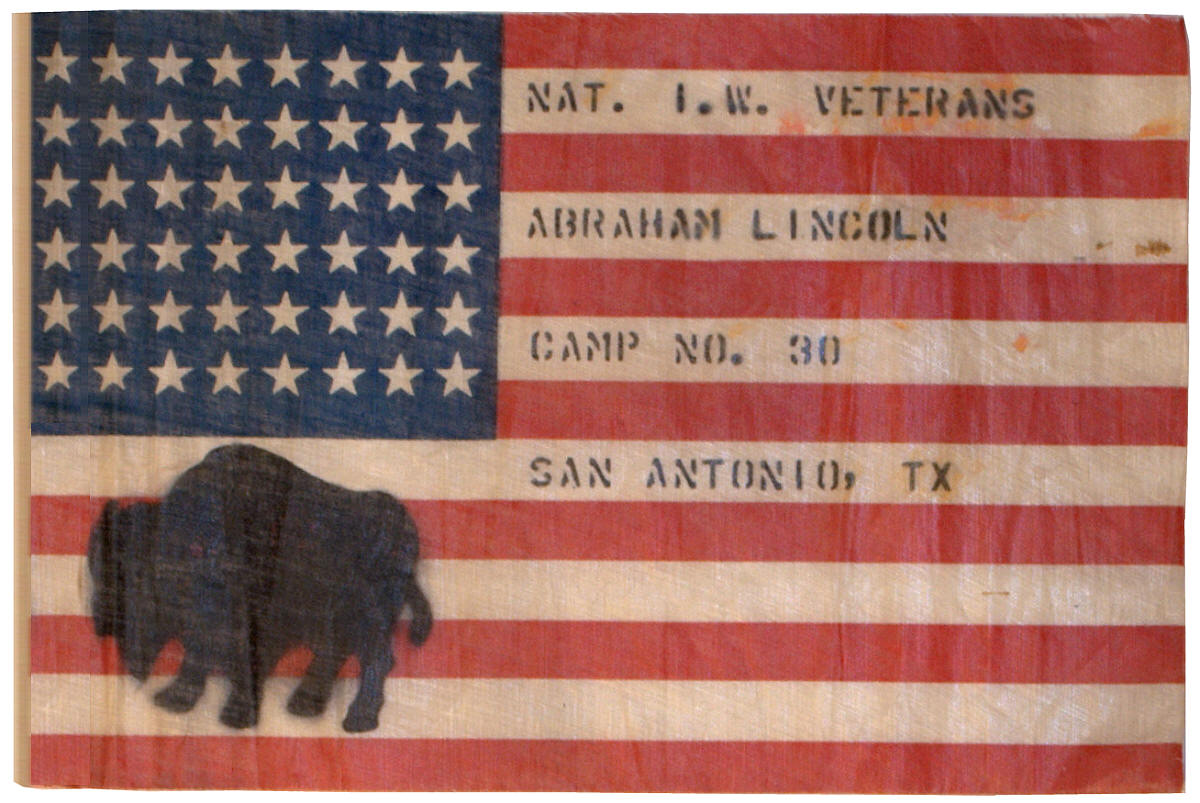 |
Buffalo Soldiers Reunion
Flag. National
Indian Wars Veteran's Camp
No. 30, known as the Abraham
Lincoln camp, was organized
in San Antonio, Texas, on
October 14, 1929 by Thomas
J. Dilwood of B Company,10th
US Cavalry. The 10th
US Cavalry was one of the
original Buffalo Soldiers
regiments, and Camp No. 30
was the only all-black
veteran's camp for the
Indian Wars veterans.
This flag, made for the
veteran's camp, was found
with the note: "This flag
was purchased from the Kelly
family. Their Great
Grandfather Wm. H. Kelly was
a member of Camp 30." |
|
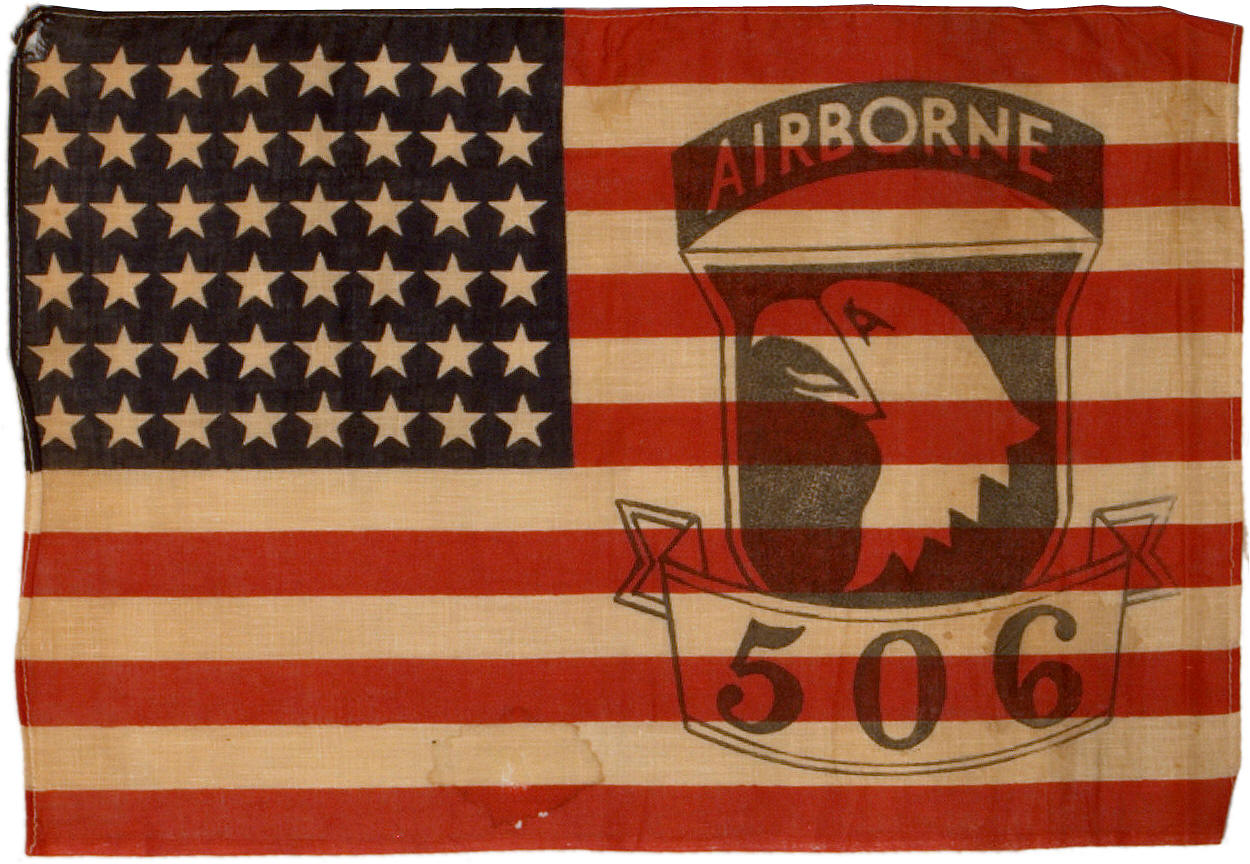 |
506th Parachute Infantry
Regiment, 101st Airborne
Division, "Band of Brothers"
Reunion Flag. This
rare reunion flag was found
in an estate in Bergen
County, New Jersey, along
with a full dress uniform
coat of a lieutenant of the
506th Regiment. A
famous subordinate command
of this unit, E Company
("Easy Company"), 2nd
Battalion, 506th Parachute
Infantry Regiment, 101st
Airborne Division is the
unit featured in the famed
book "Band of Brothers" by
author Stephen Ambrose,
which was later made into an
award winning classic
television series by Tom
Hanks and Stephen Spielberg. |
|
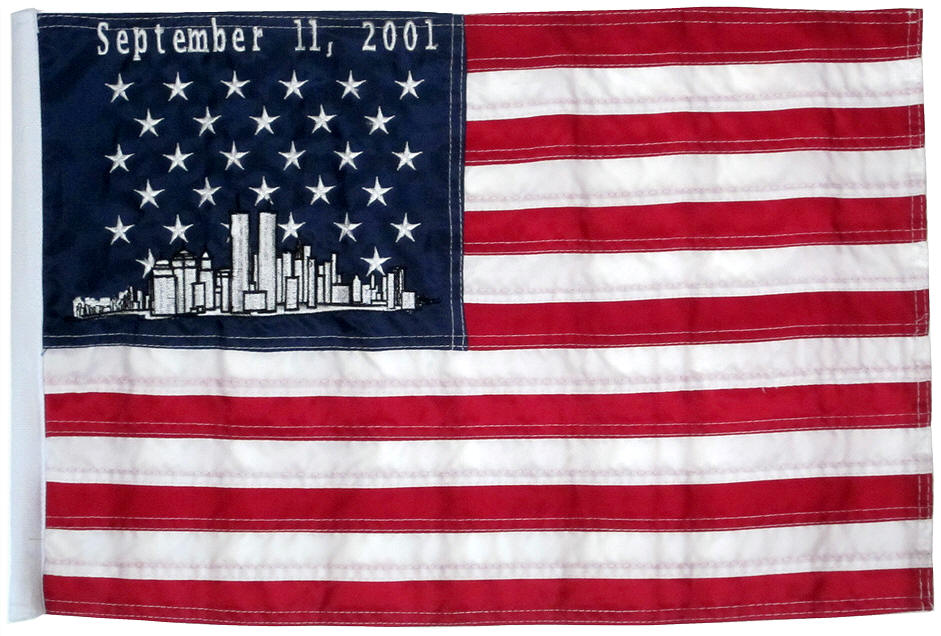 |
September 11, 2011, with
a Graphic Representation of
the World Trade Center and
Lower Manhattan.
This flag is still
manufactured and sold today,
in various sizes including 3
feet x 5 feet, and in
various construction
techniques including sewn
and embroidered polyester,
or printed. This
particular flag is a small
variant, but is embroidered
with sewn stripes. The
design is covered by US
Patent No. 464590. |
|
 |
Next:
Star Patterns |
 |
|
|

